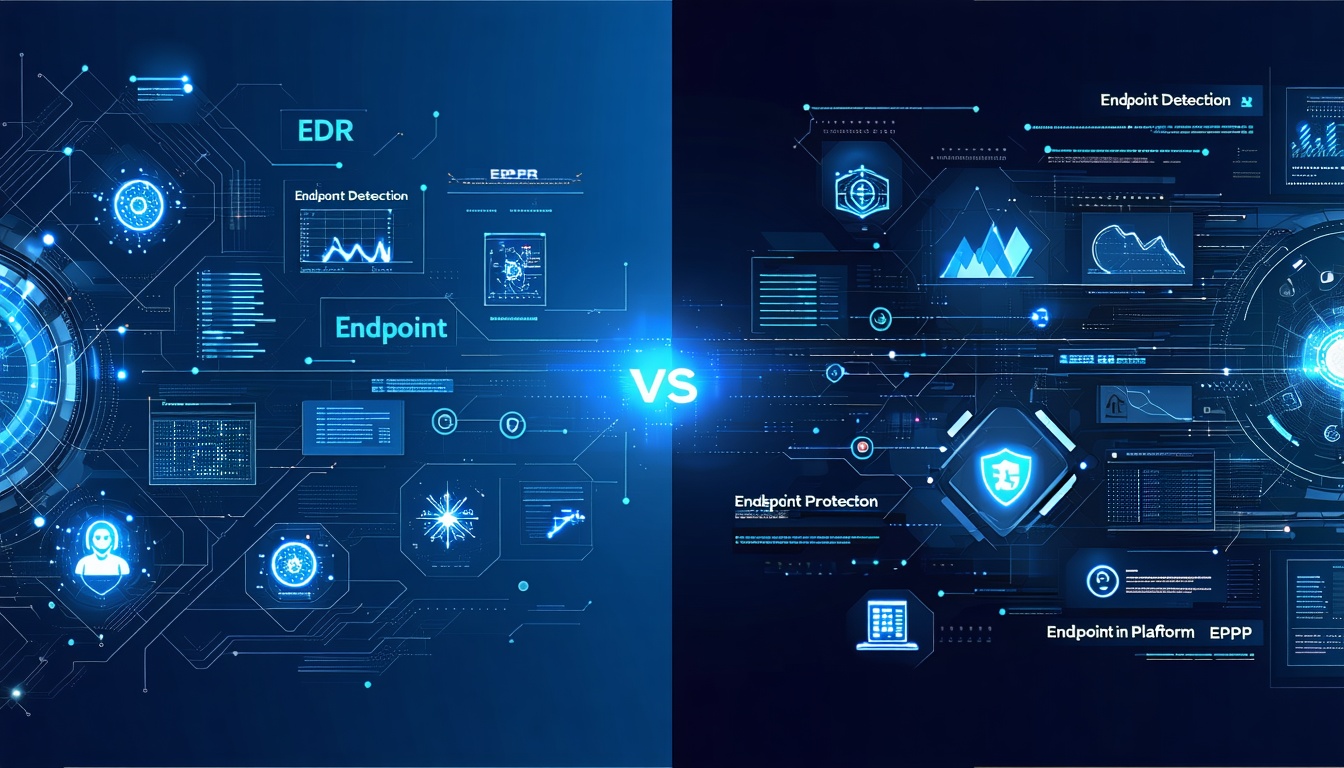In an era of escalating cyber threats, endpoint security has become a strategic imperative for organizations. When evaluating EDR vs EPP, IT decision-makers face two complementary technologies, Endpoint Protection Platforms and endpoint detection and response solutions, each addressing distinct aspects of device defense. A clear comparison helps align security investments with risk tolerance and operational priorities.
EDR vs EPP Comparison
Endpoint Protection Platforms
Endpoint Protection Platforms (EPP) offer prevention-focused controls such as antivirus, firewall policies, encryption and data loss prevention. They examine files and processes using signature-based or heuristic methods to block known malware. EPP typically requires minimal human intervention and scales easily across large device fleets. Yet because EPP is primarily preventative, it may miss fileless attacks or novel threats that bypass initial defenses. Traditional solutions leverage custom device controls and automated quarantine features, though visibility into post-compromise behavior remains limited. Advanced offerings may integrate basic detection capabilities and extended log retention through an edr database.
(“Traditional EPP solutions are inherently preventative, using signature-based detection for newly discovered threats” (Redscan).)
Endpoint Detection And Response
Endpoint Detection and Response (EDR) continuously monitors endpoint-system-level behaviors to detect and respond to cyber threats in real time. These platforms record telemetry—file executions, registry changes and network connections—and apply machine learning and behavioral analytics to identify indicators of compromise (IOCs) and indicators of attack (IOAs) (CrowdStrike). When suspicious activity arises, EDR can automatically isolate devices or provide guided remediation. Cloud-native architectures support rapid queries across extended retention windows, as seen in next gen edr offerings. This depth of visibility enables teams to trace attack chains, contain incidents swiftly and reduce dwell time.
Protection Capability Analysis
The table below summarizes how EPP and EDR address core protection functions.
Prevention Mechanisms
- Signature-based scanning and heuristic analysis to block known malware
- Custom device controls, such as application whitelisting and system lockdown
- Automated quarantine and rollback of infected files
Detection And Analytics
EDR solutions correlate endpoint data with threat intelligence feeds and map events to frameworks like MITRE ATT&CK. They analyze billions of signals in real time to flag anomalies that bypass static controls. This proactive approach helps identify fileless attacks and insider threats before major damage occurs (Red Canary).
Response And Remediation
- Automated device isolation to prevent lateral movement
- Guided workflows for root cause analysis and cleanup
- Suggestions for system restoration to minimize downtime
- Integration with security orchestration tools for coordinated incident response
Operational Requirements Assessment
Deployment And Management
EPP deployments often involve lightweight agents and cloud-based management consoles, simplifying rollout and policy enforcement. By contrast, EDR platforms generate high volumes of telemetry, requiring skilled analysts to triage alerts and investigate incidents. Organizations may need to define clear workflows and invest in training or managed services to realize full value.
Scalability And Recall
Comprehensive detection demands extended data storage and rapid retrieval. Without sufficient capacity, teams can spend days or weeks reconstructing incident timelines, prolonging remediation and increasing risk of reinfection. Cloud-native EDR architectures typically offer elastic storage and sub-five-second query performance, reducing investigative friction and supporting compliance requirements.
Performance Metrics Review
Detection Speed
EDR solutions can respond to threats in as little as 15 minutes, while traditional antivirus and EPP-only setups may take hours or days to flag sophisticated attacks (Heimdal Security). In practice, 14% of companies with EDR detect breaches almost instantly, compared to 9% without, and 14% detect breaches within a few hours, versus 10% for EPP-only environments.
Containment And Recovery
Data breaches can take 49 days or longer to contain, and an average ransomware incident may cost up to USD 4.88 million in financial losses (SentinelOne). Automated isolation and guided remediation within EDR platforms accelerate containment, minimize the need for machine reimaging and preserve business continuity. Moreover, according to Verizon’s 2024 Data Protection Report, 62% of financially motivated cyber attacks use some form of ransomware or extortion, underscoring the value of rapid response capabilities (SentinelOne).
Integration And Strategy
Converged Security Solutions
Increasingly, vendors are unifying EPP and EDR functions into single platforms to streamline administration and enforce consistent policies. Converged offerings reduce integration complexity and provide a unified console for prevention, detection and response workflows.
Complementary Deployment
Many organizations adopt EPP as the first line of defense and layer EDR for post-breach visibility. Common integration scenarios include:
- Forwarding EDR alerts to a SIEM for correlation and threat hunting (see siem vs edr)
- Extending response capabilities across multiple domains through XDR frameworks (see edr vs xdr)
- Tailoring solutions for smaller environments with simplified management (see edr for small business)
This combined strategy delivers prevention and active defense while optimizing resource allocation.
Conclusion
Endpoint Protection Platforms and Endpoint Detection and Response solutions each fulfill essential roles in a modern cybersecurity strategy. EPP excels at blocking known threats with minimal management overhead, while EDR provides deep visibility, rapid detection and automated response to advanced attacks. Organizations may consider a converged or complementary deployment to achieve comprehensive endpoint security. The optimal balance depends on risk tolerance, staffing expertise and long-term resilience objectives.
Need Help With Endpoint Security?
Need help with selecting the right endpoint security approach? We help identify the ideal mix of prevention and detection-response capabilities by assessing organizational risk profiles, operating environments and compliance requirements. Our experts connect businesses with leading providers and tailor solutions to strategic objectives. Connect with us today to begin a tailored evaluation.





